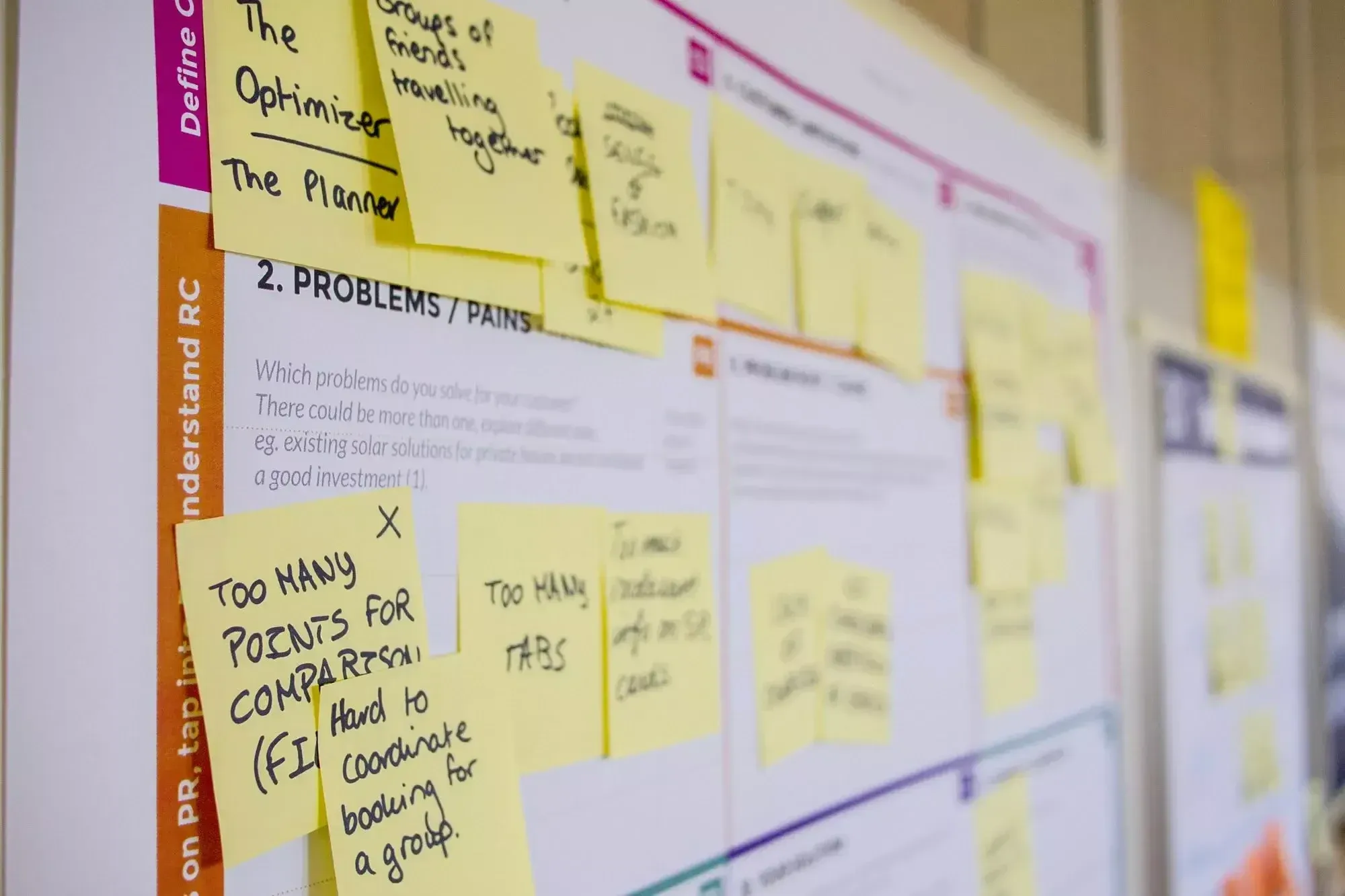Minimum Efforts, Maximum Results with MVP

Minimum Viable Products (MVPs) are not only but foremost a game changer for startups and entrepreneurs with low budgets and low-risk range. MVPs allow you to validate your ideas with minimum effort and resources while maximizing results and outcomes.
In this article, we will dive deep into the concept of MVPs and explore how they can be used to bring your business model to life with maximum impact and minimum risk. We'll examine the key principles behind MVPs and when they are best used and provide practical examples and tips for getting started with your own MVP. Whether you're an entrepreneur with a new business idea or a startup looking to validate your product, this article will give you the insights and guidance you need to succeed.
What is an MVP?
The term "Minimum Viable Product" was popularized by Eric Ries, a startup advisor and author, in his book "The Lean Startup". In the book, Ries outlines the Lean Startup methodology, which emphasizes a data-driven approach to product development, validated learning, and rapid iteration. The concept of an MVP is a key component and it refers to the earliest version of a product that can be released to the market with the minimum amount of features and functionality necessary to validate key assumptions and gather customer feedback. The goal is to help Product Managers to learn what works and what doesn't, and then iterate and improve based on that feedback.
A Minimum Viable Product (MVP) is not:
- A complete product with all features
An MVP is intentionally limited in scope and features, so that startups can validate their ideas and gather feedback from early adopters. - A polished, fully functional product
An MVP is not expected to have a polished look and feel or be fully functional, but it should have enough working components to provide value to early adopters. - A product without any real value
An MVP should still provide real value to its users, even if that value is limited to a specific subset of users. - A product with no growth potential
An MVP should have the potential to be developed into a full-fledged product in the future, based on customer feedback and market demand. - A product that is difficult to modify
An MVP should be flexible and adaptable, allowing startups to pivot and make changes based on customer feedback.

3 Critical Characteristics Of A Minimum Viable Product
A minimum viable product should demonstrate the basic core features of the product idea, while still being affordable to produce with minimal effort.
It should also provide value to early adopters by addressing potential pain points of the target market.
Lastly, the MVP should serve as a solid foundation of your business model, allowing for iteration of the core features to create a product that is helpful and valuable to a wide range of users.
Why is an MVP important for Startups?
Startups and Entrepreneurs are like superheroes, only without their powers - they have big ideas to change the world, but struggle with their limited resources and time.
So why exactly are MVPs crucial for Startups? We gathered the most important benefits:
- MVPs minimize the risk of building a product that no one wants. By launching with just the essential features, startups can validate their business ideas and gather feedback from early adopters before investing significant time and resources.
- Faster time-to-market. With an MVP approach, startups can launch their products quickly and start generating revenue sooner.
- Increased agility and flexibility. By launching an MVP, startups can make informed decisions about future development based on customer feedback, allowing them to pivot and make changes quickly if needed.
- More efficient use of resources. With an MVP approach, startups can focus on delivering the most important features first, avoiding the trap of adding unnecessary features that can delay the launch and consume valuable resources.
- Improved competitiveness. With a faster time-to-market and an MVP approach, startups can gain a competitive advantage in their respective industries by delivering a product that meets customer needs and market demands.
In other words, Minimal viable Products will help to become the superhero you want to be!
MVP in Practice - An Example:
To make the use of an MVP easier to understand we wrote down a practice example for you to get behind the benefit for you as an entrepreneur or developing a startup:
Suppose a startup is developing a new workout app that helps users track their progress and get personalized workout plans. The initial vision is to have features like tracking multiple workouts, generating meal plans, and connecting with friends to motivate each other.
So instead of building all these features at once, the startup decides to launch an MVP that only includes the core feature of tracking workouts. The MVP has a simple user interface where users can log their workouts, set goals, and see their progress over time.
The MVP is then launched to a small group of early adopters who are passionate about fitness. Based on their feedback, the startup decides to add a few more features, such as a meal tracker and the ability to connect with friends.
How to build an MVP
Now you know, why your startup could need the use of a minimum viable product. So let us show you what an effective development of MVP looks like.

There are 6 main steps you need to consider when building an MVP:
- Define the Need for your customers:
This step has to be the most important one to be considered. Ask yourself if the product you want to build will solve an existing problem for your customers or change their life in any way. If not, chances to be successful with your product, even after building an MVP, are very low and you risk yourself to lose your invested time and money. - Identify your target audience:
The second step goes more or less hand in hand with the first step. After making sure you're building a solution that has a demand and solves the customer's problem it's time to get to know who your target audience is and what their pain points are. This will help you tailor your MVP and increase your chances of being successful with it. - Do your competitor analysis:
Research the market to understand what competitors are offering and how you can differentiate yourself. The analysis will also help you to learn from their successes and failures and take advantage of it. - A minimum set of features:
Based on step 3 and 4 you should now determine the minimum set of features that are essential to solve the problem. These features build the base of your MVP. - Prioritize the features:
It is important to give each feature its own priority. The most important features should be built first and try to avoid getting lost in squeezing all supposedly needed features. Not all of them will have the same priority. Do not forget that your MVP is the basic. Keep some features for the final product that are the icing on the cake. Everything else will slow down the development process of your MVP. - Set measurable goals:
Tracking the success of your MVP is mandatory. To monitor its performance and make data-driven decisions your MVP needs measurable goals so you know what to include next. - Testing & Feedback:
Before launching your MVP, it's crucial to subject it to testing. First, examine it by quality assurance specialists to ensure its functionality and excellence. Then, proceed with A/B Testing. Use the feedback to make necessary improvements to your product.
This iterative process of testing, learning, and building is a common approach used by successful companies such as Uber, Spotify, and Amazon.
Popular tech stacks used in building MVPs
While the tech stack that is used for building an MVP has no clear specifications, the tech stack you want to use can vary depending on the product and its requirements.
However, we listed some popular tech stacks that are primarily used in building MVPs:
- MEAN (MongoDB, ExpressJS, AngularJS, NodeJS)
- LAMP (Linux, Apache, MySQL, PHP)
- Ruby on Rails
- Django (Python framework)
- React Native (for mobile MVPs)
The most important factor is to choose a tech stack that allows for quick and efficient development of a minimum viable product, while also being scalable for future growth.
Every Minimum Viable Product needs a Minimum Viable Architecture
Minimum Viable Architecture (MVA) is an approach to software development that prioritizes delivering essential features and functionalities to a minimal degree. It is a crucial aspect of building a Minimum Viable Product, as it helps to validate product-market fit and minimize development costs.
The objective of MVA is to create a scalable, flexible, and robust architecture that can accommodate future changes and growth. It helps startups to focus on delivering core features and functions that are essential for the product's success, rather than investing time and resources in non-essential elements. This enables startups to validate their ideas with real customers and assess their product-market fit before investing significant time and resources into the product's development.
MVA also enables startups to iterate and improve their products quickly and efficiently, as they can focus on fixing critical issues, rather than having to rebuild the entire product from scratch. This means that startups can launch a minimum viable product in the shortest possible time, validate their ideas with real customers, and make data-driven decisions on what to add next.
What are the benefits of a Minimum Viable Architecture?
To show you the importance of using a Minimum Viable Architecture while building an MVP we listed you all the benefits of an MVA, and how MVA can support your business growth.
- Reduced Development Time:
By using a minimal set of components, the development time is significantly reduced as the focus is on delivering only what is essential. - Reduced Technical Debt:
An MVA avoids the creation of excess or unnecessary technical components, reducing the amount of technical debt that may accumulate over time. - Improved Focus on Core Functionality:
An MVA prioritizes the development of core functionality, ensuring that the MVP delivers what is most valuable to users and stakeholders. - Improved Scalability:
An MVA helps you to design your architecture in a way that is scalable, making it easier to add more features and components as the product grows and evolves. - Increased Flexibility:
The modular nature of MVA allows you to quickly make changes or updates to specific components, without affecting the entire system. This makes it easier to adapt to changing business needs. - Better Quality:
By focusing on the minimum set of components needed to deliver value, an MVA helps to improve the quality of the product, as it reduces the potential for bugs, errors and other technical issues. - Reduced Time to Market:
By focusing on only the essential components, an MVA helps to reduce the time to market, making it possible to launch the MVP more quickly and start collecting feedback from customers.
Do I always need an MVA when building an MVP?
Ultimately, the decision whether or not to use an MVA when building an MVP should be based on your unique project requirements and goals.
Essentials of MVP and MVA wrapped up
- MVP is a key component of the Lean Startup methodology, it refers to the earliest version of a product that can validate key assumptions and gather customer feedback.
- An MVP is not just for start-ups. Every app has a first version that can be considered an MVP. MVPs are a helpful part of making a product. Unlike regular prototypes, MVPs are meant to stay and be improved.
- MVPs minimize risk, faster time-to-market, increased agility, efficient use of resources, and improve competitiveness.
- When building an MVP, including an MVA helps the team check if the product is technically sound and gives it a solid base that can change as the product grows.
- MVA helps validate product-market fit and minimize development costs and provide a stable foundation for the product that can be adapted as the product evolves.
- The objective of MVA is to create a scalable, flexible, and robust architecture that can accommodate future changes and growth.

